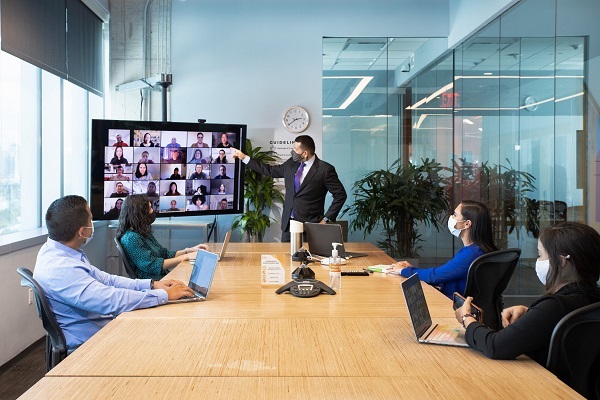Vyopta, a collaboration intelligence company, released the final wave of results from a study on the real-life consequences of remote and hybrid work.
Conducted by Wakefield Research, the study surveyed 200 U.S. executives at companies of 500 or more employees between July 30 and August 10, when COVID numbers began to rise again and return to office plans were put on hold.
Virtual and hybrid meetings may be the new normal, but they’re still not meeting executives’ expectations. More than three in four (77 percent) say participants who join meetings remotely are at a disadvantage compared to those who join in-person, including 23 percent who say they are very or extremely disadvantaged.
“Business leaders at large organizations spend about 75 percent of their professional time in meetings or meeting-related work,” said Dr Joe Allen, meeting scientist and professor at University of Utah Health and author of Suddenly Virtual: Making Remote Meetings Work and the upcoming Suddenly Hybrid.
To counteract the gap between in-person and online, executives are taking action to make virtual meetings as effective as being there. The most taken measures include prompting feedback from remote participants (66 percent), encouraging remote participants to join using video (65 percent) and keeping meeting links open until all or almost all participants have left the room (65 percent).
When participants can’t get their cameras or mics working, the online chat function can be their lifeline. Yet 43 percent of companies are not having someone monitor the chat for contributions from remote participants, which is done by only 57 percent of companies.
The effort to make hybrid work means executives need to believe in their employees. Survey respondents said confidence in a staff member’s ability to navigate remote collaboration technology is very or extremely important (89 percent) when it comes to making decisions about allowing staff members to work remotely.
It’s not just money being invested in collaborative tools, but employees’ time as well. Sixty-four percent of executives say employees at their company receive formal training on how to collaborate with remote co-workers. The remaining 37 percent offer informal or no training at all.
“This survey has surfaced a trust issue between management and employees — the expectations for remote and hybrid work are not clear and the lack of training on how to manage this new way of working is hurting everyone,” said Alfredo Ramirez, CEO of Vyopta. “While our company actually works in the collaboration space and is very familiar with the technology, we are now taking a hard look at our own processes and have started new company-wide training this quarter on optimizing hybrid and remote work and employee engagement as a result.”









